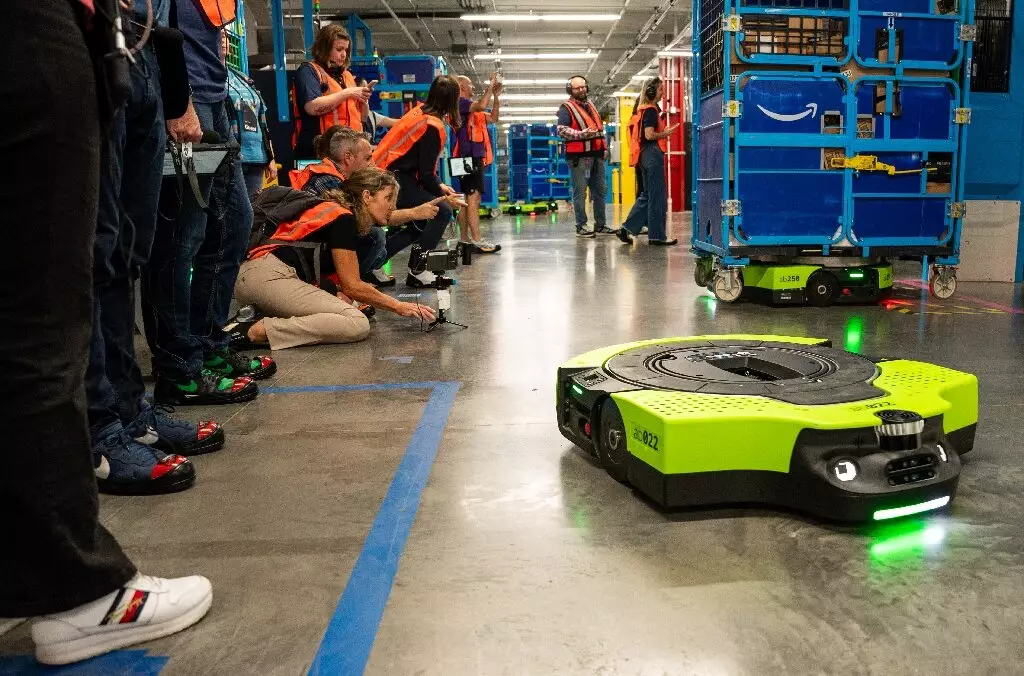Amazon’s relentless pursuit of market dominance is reshaping the landscape of commerce, technology, and even healthcare. This Seattle-based giant is not merely an online retail platform; it is carving out an expansive footprint across various sectors, including logistics, entertainment, and health services. With innovative systems aimed at streamlining operations and increasing customer satisfaction, Amazon’s ambitions are vast, but the approach does not come without scrutiny.
Revolutionizing Logistics with Advanced Technology
At the forefront of Amazon’s recent technological strides is a state-of-the-art delivery van computer system designed to enhance efficiency within its already sprawling logistics network. Doug Herrington, head of Amazon Stores, touted that the new system allows delivery vans to recognize their designated stops automatically and indicate which packages should be dropped off. Herrington believes that improving delivery speeds directly correlates with increased consumer shopping activity, a sentiment echoed by Amazon’s significant profit margins over the past year.
The staggering figure of $30 billion in profits on $575 billion in revenue illustrates the potency of Amazon’s business model, wherein rapid delivery is a cornerstone. Herrington expressed ambitions to achieve the fastest Prime delivery speeds globally by 2024, further solidifying Amazon’s commitment to a seamless customer experience. However, this relentless push for efficiency raises questions about the effects on warehouse and delivery workers, who often operate under high-pressure conditions.
A Diverse Revenue Model Under Scrutiny
Amazon’s growth is not without its controversies. The company’s multifaceted revenue streams include retail, cloud computing, advertising, and digital content, all intricately woven together through its Prime membership, a program that creates a cohesive ecosystem for consumers. Yet, this flywheel model faces allegations from the U.S. government, which claims that Amazon’s monopolistic practices stifle competition and threaten the health of the broader market.
Analysts like Suzy Davidkhanian point out that Amazon’s ability to leverage its vast consumer data for targeted advertisements and product recommendations exemplifies its deep integration into consumer lives. The acquisition of rights to stream NFL games on Prime Video aims not only to engage sports fans but also to cement Amazon’s place in the entertainment sector, illustrating how critically Amazon relies on data to cater to its audience.
In a bold move to expand its horizons, Amazon is making significant inroads into the healthcare sector with its One Medical service. At an affordable subscription rate, Prime members gain access to virtual consultations with healthcare professionals, alongside comprehensive record-keeping and prescription services optimized for quick delivery. The rollout of Amazon Pharmacy promises to harness the company’s logistics strength to ensure rapid delivery of medications, potentially reducing wait times for patients significantly.
This venture represents a significant opportunity for Amazon to diversify its business model further. Analyst Davidkhanian suggests that Amazon aims to be the singular platform meeting a wide array of consumer needs, reflecting a strategy that prioritizes convenience and integration into everyday life.
As Amazon continues to innovate, it is also ramping up its use of robotics in operations. The introduction of automated micro-warehouses represents a fusion of technology and commerce, allowing customers to order products online and pick them up in-store, with robots handling the fulfillment of those orders. While this may streamline operations and enhance the consumer experience, it also raises ethical questions about employment in an age where automation increasingly replaces human labor.
Critics have voiced concerns about the working conditions within Amazon warehouses, highlighting a proliferation of workplace injuries linked to the pressure to meet delivery timelines. The juxtaposition of increased efficiency and potential worker exploitation is a complex issue that demands attention as Amazon seeks to balance innovation with responsibility.
Looking Ahead: The Duality of Innovation
In its quest for unfettered expansion, Amazon encapsulates the duality of modern innovation—where rapid advancements in technology coexist alongside ethical dilemmas regarding labor practices and market competition. As Amazon continues to integrate itself into consumers’ daily routines through diverse services and intuitive technologies, it remains critical to examine the ramifications of such growth.
The future will likely see Amazon navigating a landscape filled with both opportunities and challenges, including scrutiny from regulators and ongoing debate regarding the implications of its business practices on the broader economy. In its journey towards becoming an omnipresent entity in various markets, Amazon must tread carefully to strike a balance between innovation and the welfare of its stakeholders.


Leave a Reply